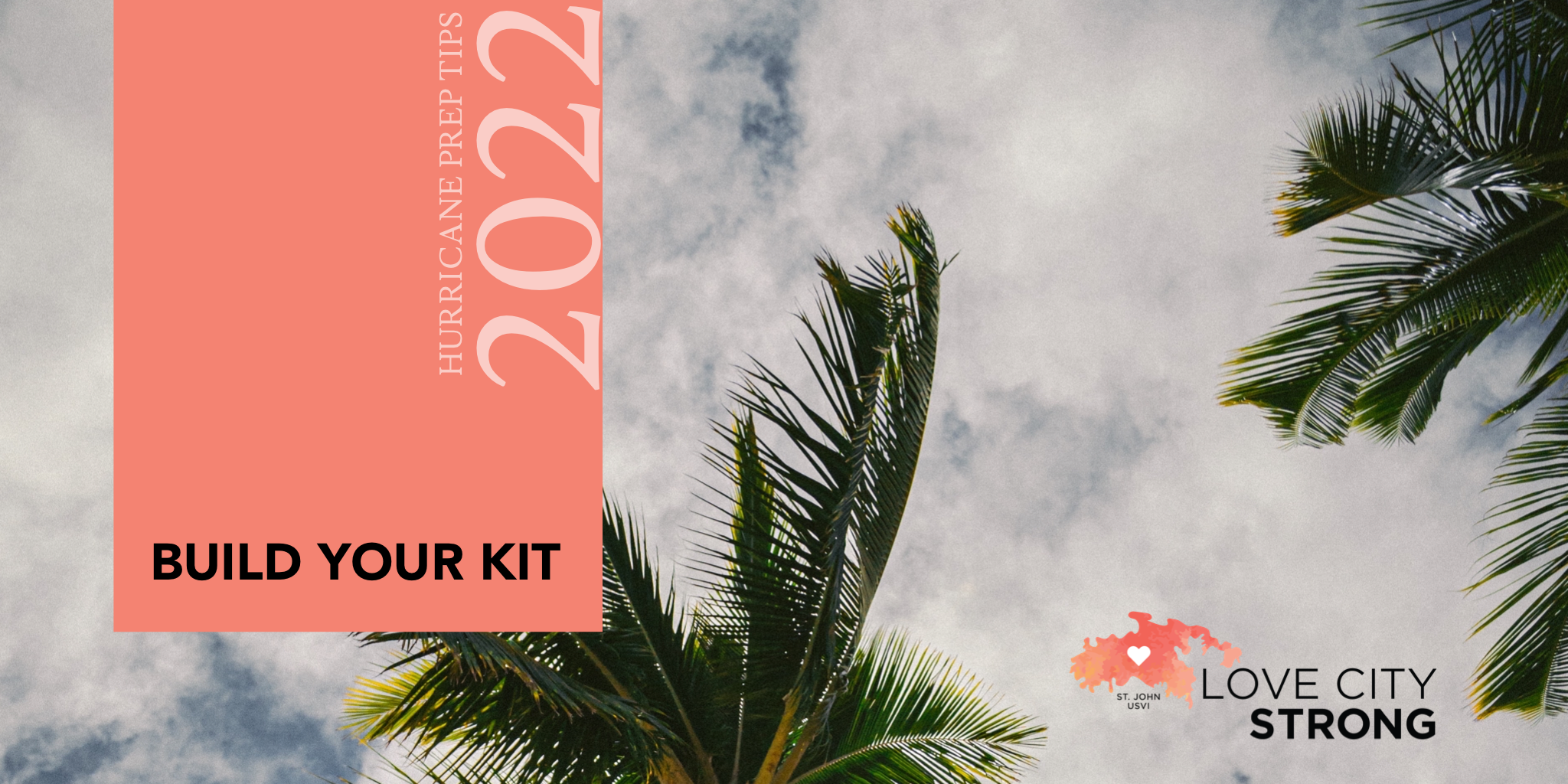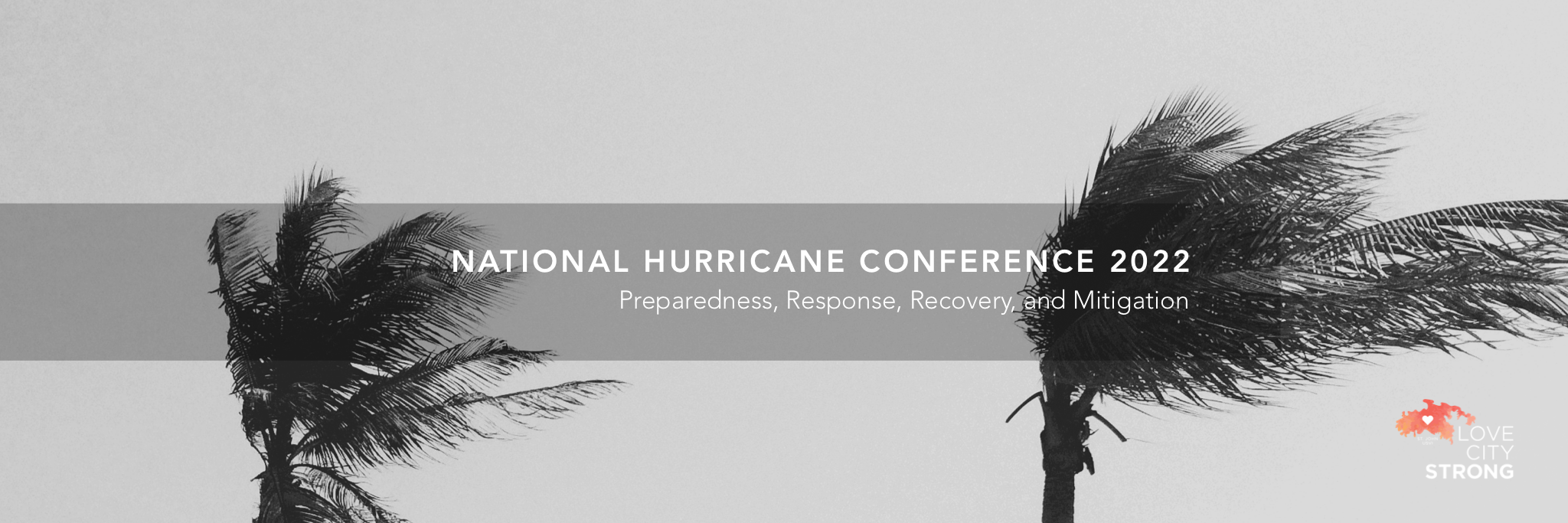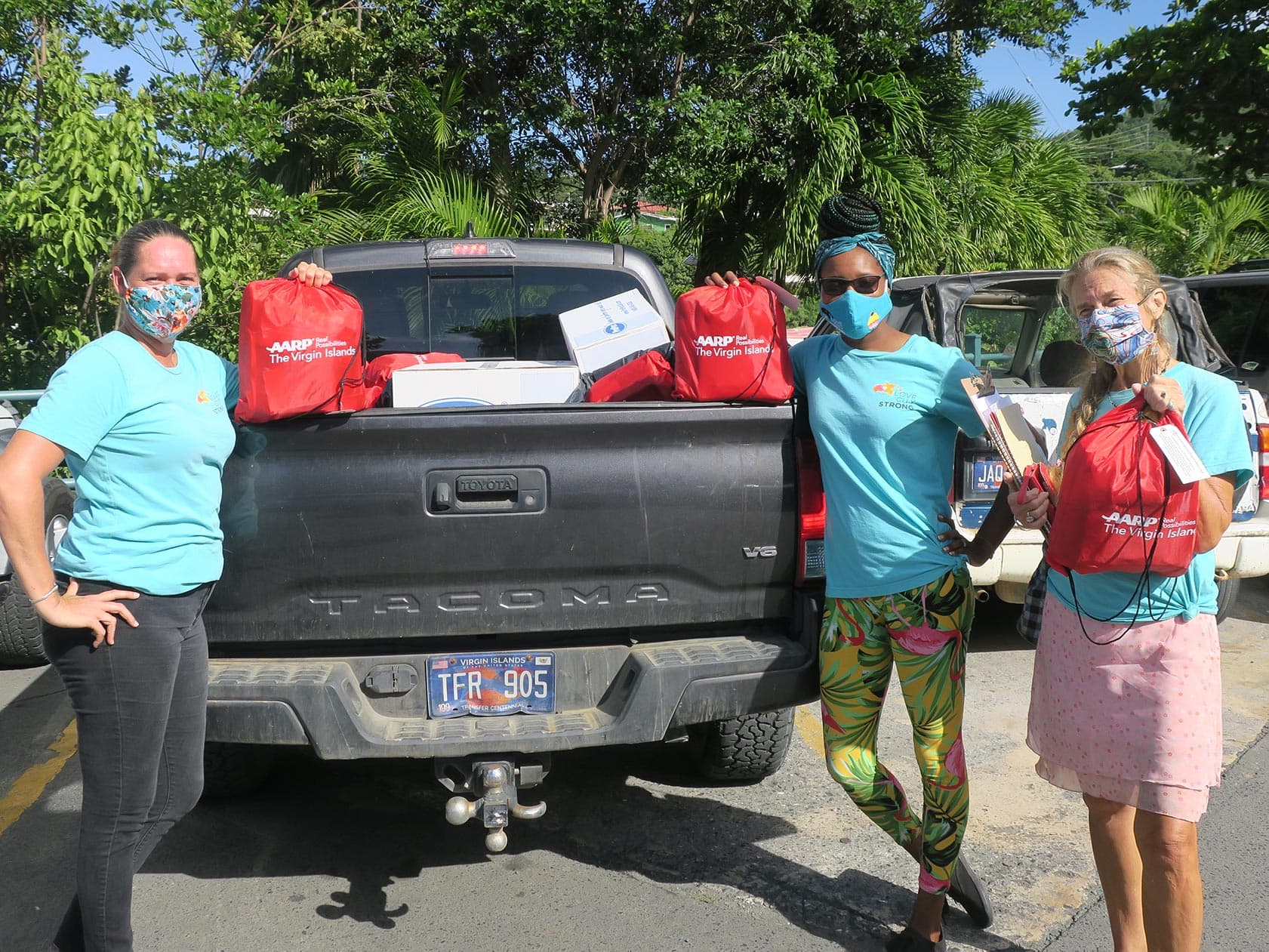
Each year around this time, we emphasize how important it is to build your kit. Generally emergency kits follow a formula : food, water, medicine, important documents… a complete list can be downloaded from Ready.gov. However, all families and households are unique, so what should you consider when building YOUR kit that will ensure it is useful for the whole household?
Access and Functional Needs
If someone in your household has access and functional needs, make sure to prioritize their supplies. This may mean packing an extra pair of prescription glasses or back up contact lenses. Perhaps hearing aids and back up batteries are your priority. Any medical supplies your family uses regularly, like oxygen, insulin, or catheters, for example, should be included. If anyone wears medical alert bracelets or tags, ensure that they are on at all times. For more information on Emergency Preparedness for Individuals with Disabilities and Access and Functional Needs, click here.
Children and Young Adults
Packing a kit for a household that includes small children or young adults is going to be very case specific. Are you a card game or board game family? Pack one or two of your favorite (and smallest) games. Is your teen a big reader? Throw in some favorite books, a book light, and a backup battery or two. If your teen is a gamer, packing a handheld device and an external charger can provide plenty of entertainment. For younger children, a favorite, comforting toy or blanket can help alleviate anxiety, and movies or tv shows downloaded onto a computer or tablet can provide a distraction in a pinch. Ready Kids has lots more great information about kids’ preparedness!
Seniors
Seniors’ comfort should be a top priority. If you are sheltering at home this is more straightforward, but if you need to go to a shelter or evacuate on short notice after a storm, your emergency kit should include a blanket, spare clothes, a jacket, comfortable shoes, and any backup supplies you may need, like adult briefs or wound dressings. Talk to seniors in your family about what forms of entertainment they prefer, and plan accordingly. For more information about how to prepare older adults for a disaster, visit the Red Cross website.
Pets
Pet Preparedness is a topic all its own! In fact, it has its own month! June is Pet Preparedness Month, and all month long Love City Strong will be spotlighting tips and best practices for keeping your animals safe during a storm. Stay tuned to our website and social media for more information!

We often focus on community preparedness here at Love City Strong, but resilience really begins with personal preparedness.
When you’re on a plane and the flight attendant is giving the safety lecture, they always tell you, in the event of an emergency, place your mask on first before helping those around you. Personal preparedness functions in much the same way. By taking action early to ensure that you are as ready as possible, you make yourself more available to help your family, friends, and neighbors in the event of a disaster.
Here are a few tips to help improve your overall readiness, particularly during hurricane season:
Know your needs
Do you have dietary restrictions? Are you on a daily medication? Do you struggle to function without that morning cup of coffee? All of these are things you can plan for in advance. Make sure you have the food you need on hand, and speak to your doctor about how to safely and responsibly build an emergency supply of medication. If coffee is your lifeblood, include a camp stove and a coffee press in your emergency kit!
Know your surroundings
Maybe your home is surrounded by trees, or maybe you’re exposed to a breeze even on a calm day. Understanding your surroundings is the first step to understanding your risk. Check your home and property for potential hazards, and take steps to address them where necessary.
Know the process
Make sure you have emergency contact information written down and readily available. Include family, friends, and neighbors as well as work, insurance, and emergency numbers. Do you have a pet? Include your vet’s number as well.
Plan financially
Even if you can’t spare much, it’s important to try and set aside some emergency cash to have on hand. Whether you save your spare change and singles all year round, or team up with your roommates to start a household emergency fund, or have a savings account that serves the purpose, find a strategy that’s manageable for you and begin the journey. For more information about this and other aspects of financial preparedness, check out this article on Ready.gov.
Think about the “what ifs”
Take a few minutes and imagine what might happen if a storm came through tomorrow. Would you lose power? Would your car be secure? Would you need to reconnect with your family at a predetermined rally point, or would you likely be together? Use the preparedness planning process to poke holes in all the scenarios you can think of, and revise your plan accordingly.
Of course personal preparedness includes many things that we talk about in the context of community preparedness as well. Building a kit, making a plan, strengthening your home… all familiar concepts. The important thing to remember is to address these things in ever expanding circles, starting with yourself, then your family, then neighbors and colleagues, and the greater community. Following these steps now will make you much more useful to them in the event of a disaster!

Here we are in May, again, and it’s time to start thinking about our hurricane preparedness efforts. For those of us who live in “hurricane alley”, these tasks are annual habits. Forming habits can be helpful, but sometimes they can make us complacent. Each year, it’s important to revisit your emergency plan, check your kit, and make sure your home and family are ready for the season.
Threats from hurricanes include powerful winds, heavy rainfall, storm surges, coastal and inland flooding, rip currents, tornadoes, and landslides. Hurricanes can often undergo rapid intensification, meaning they can quickly gain strength before and as they make landfall. For this reason, it’s important to begin your preparation well in advance of an incoming storm. Before hurricane season starts, you should:
- Update your emergency plan with your family
- Check your insurance and strengthen your home
- Assemble disaster supplies
- Help your neighbors

This week, I am pleased to be attending the 2022 National Hurricane Conference in Orlando. This annual event is focused on hurricane preparedness, response, recovery, and mitigation. Panels are focused on a variety of sectors, including technological developments, communications, forecasting, federal mitigation programs, public-private partnerships, and more.
One particularly exciting development this year is the presence of the Territory’s emergency management agency, VITEMA, on several panels. On Monday, Assistant Director Barbara Petersen, Deputy Director for Planning and Preparedness Regina Browne, Deputy Director of Operations Bruce Kelly, and Public Information Officer Erik Ackerson led a panel on local emergency response to the Covid-19 pandemic. Their presentation highlighted some of the challenges the Territory faced, as well as the many successes of VITEMA and the VI Department of Health over the last two years.
On Tuesday, Assistant Director Petersen and Deputy Director Browne hosted a panel focused on the Territory’s Hazard Mitigation & Resilience Plan. They were joined by Dr Greg Guannel, Director of the Green Caribbean Center at the University of the Virgin Islands. The robust discussion addressed climate change, infrastructure, and the need for systemic solutions to complex problems in the Territory.
Wednesday afternoon is dedicated to the NHC General Session. This event will include an appearance by FEMA Administrator Deanna Criswell as well as an Equity in Disasters panel. The Territory’s own Regina Browne is a panelist for the Equity in Disasters session. Along with her, a diverse group of representatives from emergency management organizations and nonprofits will discuss the importance of planning to ensure equity in disaster response.
While the VITEMA panels have certainly been relevant to our work at LCS, other opportunities abound. The NHC provides an invaluable chance to network with emergency managers, federal responders, vendors and subject matter experts from across the country. While each disaster is unique, there’s a great deal we can learn from the experiences of other communities, and we hope that our experiences are valuable to them as well. I am thrilled to be back at the National Hurricane Conference this year, and am already looking forward to next year’s meeting in New Orleans.

When a disaster strikes, those of us watching from afar have an immediate impulse to give our belongings to those who have lost everything. The impulse to give things like food or clothing is not necessarily a bad one. But if your goal is to help in a way that is as meaningful as possible, giving canned goods, clothes, or other items to disaster survivors is often less effective than giving one simple item: Money.
When resources on the ground are limited, and in communities like St. John where those helping on the ground are themselves disaster survivors, everyone’s time and energy are precious. Physical goods create extra work for those active in recovery. Organizations and volunteers have to devote their time and resources to the collection, sorting, storage, and distribution of goods. This involves money and valuable man hours that should be spent addressing a community’s immediate, most pressing concerns.
Moreover, in post-disaster areas there may not be enough actual space to deal with donated goods. When the majority of physical structures in a community are destroyed, safe and secure long term storage is nearly impossible. With communities in a state of disrepair, and so much storm debris on the ground to deal with, donated goods can create a severe strain on a community’s waste management system.
The best and most meaningful act of charity that you can do for a community after a disaster strikes is to donate money, not physical goods. Providing funding to community organizations eliminates many of the aforementioned challenges, and allows those of us on the ground who are engaged in recovery work to truly meet the community’s needs as they occur.
Here are a few things to remember when donating:
- Donate money directly to trusted, well-established nonprofit organizations with ties to the community. Use free websites like GuideStar and Global Giving to get background information on them, and ensure that they will be good stewards of your generosity.
- Use Go Fund Me or Facebook fundraisers to support individuals or families. Avoid using these platforms to donate to nonprofits, as they create another layer of complication in the giving process. There can be hidden fees and long delays in funding disbursement.

The Territory entered the 2020 hurricane season on high alert, facing the forecast of an active season paired with the COVID-19 pandemic. At Love City Strong, we began modifying and updating our preparedness and response plans early on, reaching out to our partners at Virgin Islands Territorial Emergency Management Agency (VITEMA), the Virgin Islands Department of Health (VIDOH), the Virgin Islands Department of Human Services, and the Centers for Disease Control (CDC) for guidance and best practices for responding to a disaster during a global health crisis.
Thanks to our work responding to the pandemic on St. John, our team was already used to wearing personal protective equipment (PPE) and adhering to social distancing protocols. We modified our annual community outreach programs, becoming less reliant on public events and leveraging public and private partnerships in order to successfully respond to two significant weather events while keeping residents informed.
Tropical Storm Isaias impacted the Territory on July 29th, and our response lasted from July 25th through July 30th. This large system moved quickly, but did not turn into a tropical storm until it passed just south of St Croix. Our team remained on alert and executed pre- and post-storm wellness checks in the community, shifting from at-home visits to conducting them entirely over the phone. We assisted residents with downed trees and minor storm debris on their property, and brought resources like solar powered lights to those experiencing power loss.
A wave of severe weather associated with Tropical Storm Laura impacted the Territory in the early morning hours of Saturday, August 21st. Once again, what was expected to be a significant rain event stayed to our south, resulting in a limited impact. Within 24 hours of the forecast impact, we knew that the path would keep Laura from being much of a threat to the USVI, but our team continued to execute pre- storm wellness checks, and helped several residents with boarding up and clearing their property.
This hurricane season saw us working closely with VITEMA and our other government partners, as well as our sister nonprofits affiliated with Virgin Islands Voluntary Organizations Active in Disaster (VI VOAD), to keep St. John prepared. Between storms this year, we delivered sandbags to over 100 households, and handed out blue roofing via a drive-through system alongside our partners. Both of these events would normally be done in the form of large public gatherings, but we were able to execute them successfully while still observing social distancing and PPE use.
The 2020 hurricane season taught us much about the unpredictable nature of disaster preparedness, and emphasized the complex relationship between multiple disasters that share the same impact window. I am proud of the work our team has done this year, in the face of so many challenges. As the season comes to a close, we look forward to further refining our deployment plans, expanding our preparedness and resilience programming, and serving the community in the years to come.
